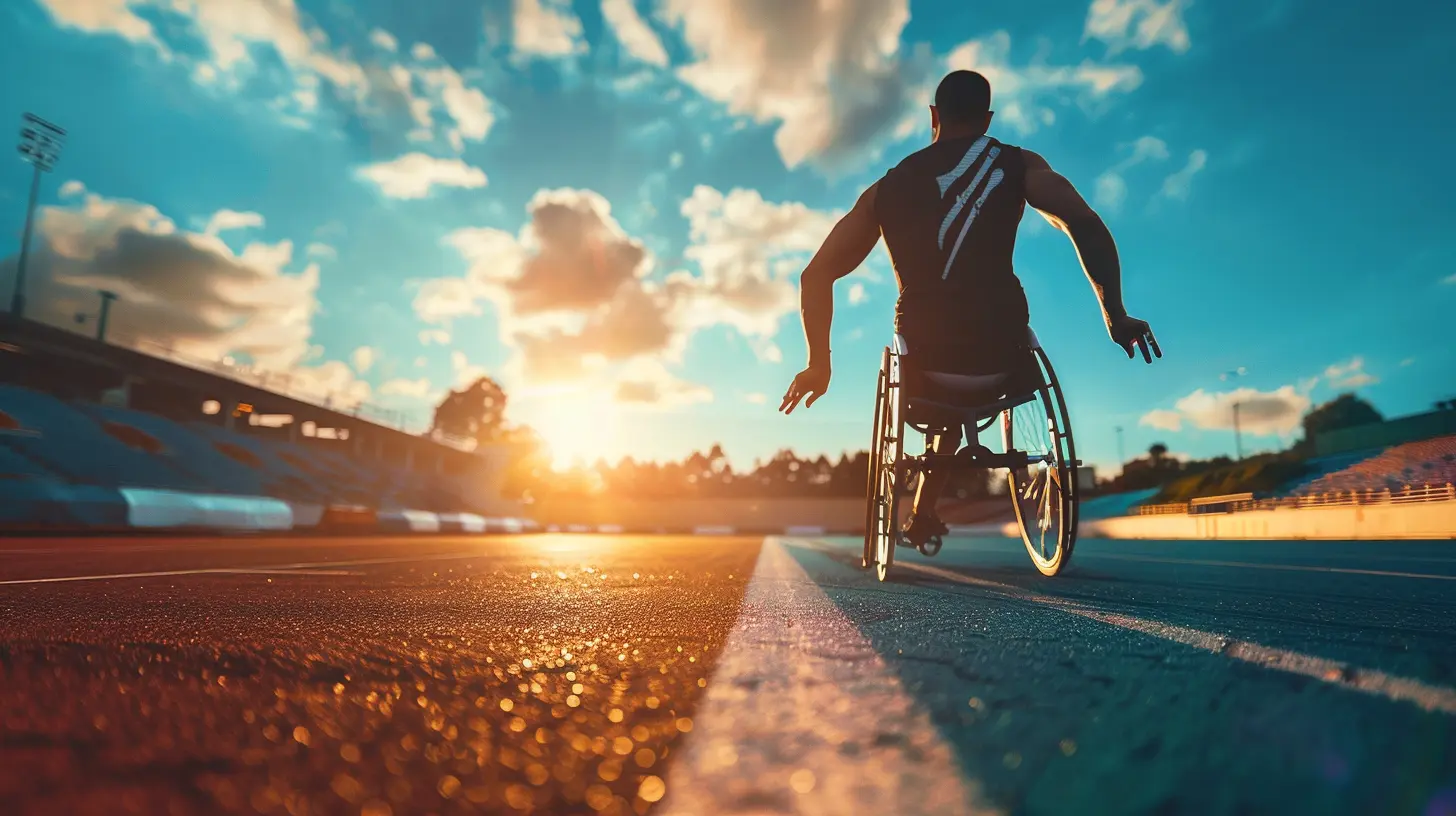How Adaptive Sports Science is Empowering Athletes with Disabilities
15 September 2025
When you think about sports, what comes to mind? Strength, speed, endurance? But what if I told you that sports aren’t just about physical ability—they’re about determination, innovation, and breaking barriers? This is where adaptive sports science comes into play, completely revolutionizing the way athletes with disabilities compete and thrive.
Gone are the days when disabilities meant sitting on the sidelines. Thanks to advancements in technology, training techniques, and sports science, athletes with disabilities are now competing at the highest levels, shattering records, and proving that limits are meant to be broken. So, let’s dive into how adaptive sports science is not just leveling the playing field but redefining sports altogether.

The Evolution of Adaptive Sports Science
From Basic Adjustments to Cutting-Edge Technology
Adaptive sports have come a long way. Not too long ago, athletes with disabilities had to make do with modified equipment or limited resources. But today, we’re seeing state-of-the-art prosthetics, sophisticated wheelchairs, and even exoskeletons that are transforming the way these athletes train and compete.Think about the Paralympics—once considered a side event, it’s now a global stage for elite competition. Athletes aren’t just participating; they’re pushing the boundaries of human performance, thanks to groundbreaking advancements in sports science.
Bridging the Gap Between Ability and Performance
Adaptive sports science isn't just about technology; it's about rewriting the rulebook of what's possible. By analyzing biomechanics, optimizing training routines, and fine-tuning equipment, athletes with disabilities are achieving feats that were once thought impossible.We're not talking about just keeping up with able-bodied athletes—we're talking about creating a whole new standard of excellence.

How Adaptive Sports Science is Changing the Game
1. Advanced Prosthetics: More Than Just Artificial Limbs
Prosthetics have gone from merely replacing lost limbs to enhancing performance. Take the example of sprinters using carbon-fiber running blades—these are designed not just to mimic human legs but to maximize speed and efficiency.Athletes like Paralympic champion Blake Leeper have proven that these innovations don't just help them compete—they help them dominate. These prosthetic limbs are lightweight, energy-efficient, and built for high performance, allowing athletes to reach unprecedented speeds.
But it’s not just for running. In sports like cycling, swimming, and even basketball, prosthetic enhancements are providing athletes with new ways to optimize movement, reduce strain, and boost endurance.
2. Wheelchair Technology: Built for Speed and Agility
Gone are the heavy, clunky wheelchairs of the past. Today’s sports wheelchairs are engineering marvels—sleek, aerodynamic, and tailored for specific sports like basketball, rugby, and tennis.Take wheelchair basketball, for instance. These athletes aren’t just maneuvering the court; they’re spinning, pivoting, and executing plays with pinpoint precision—all thanks to lightweight, high-performance wheelchairs that enhance mobility rather than restrict it.
3. Exoskeletons and Robotics: The Future of Adaptive Sports
What if technology could give athletes with disabilities superhuman capabilities? Enter exoskeletons—robotic assistive devices that enhance movement, improve strength, and allow athletes to perform at levels once deemed impossible.For example, companies like Ekso Bionics and ReWalk are developing wearable robotic suits that help individuals with spinal cord injuries walk and even participate in sports. Imagine a future where an athlete with paralysis can compete in marathons or even contact sports with the aid of these robotic systems. Sounds like science fiction? Well, it’s already happening.
4. Biomechanics and Performance Optimization
Understanding how the body moves is key to improving athletic performance. Sports scientists are analyzing the biomechanics of adaptive athletes to refine their movements, reduce injuries, and enhance overall efficiency.Take para-swimmers, for example. By using underwater cameras and motion-capture technology, researchers can assess stroke techniques, fine-tune movements, and develop training programs that maximize speed and endurance.
Biomechanics isn’t just about making athletes faster—it’s about helping them move smarter.
5. Sports Psychology: The Mental Game Matters More Than Ever
Athleticism isn’t just about physical prowess; the mental aspect is just as crucial. Many adaptive athletes face psychological barriers, including social stigma, self-doubt, and fear of injury.Sports psychology plays a huge role in overcoming these challenges. Techniques like visualization, mindfulness, and cognitive-behavioral therapy (CBT) help athletes develop a winning mindset.
Take Paralympic gold medalist Oksana Masters—her journey from overcoming adversity to becoming a dominant force in multiple sports proves that mental resilience is just as important as physical strength.

The Impact Beyond the Game
Adaptive sports science isn’t just changing the lives of elite athletes; it’s making sports more inclusive for everyone.1. Encouraging Participation at All Levels
With better equipment, training methods, and accessibility, more individuals with disabilities are getting involved in sports—not just at the professional level, but in everyday life.From adaptive skiing to wheelchair racing, these innovations are empowering weekend warriors, school athletes, and even fitness enthusiasts to stay active and push their limits.
2. Changing Perceptions of Disability in Society
Perhaps the most powerful impact of adaptive sports science is the shift in how society views disability. Instead of focusing on limitations, we’re now celebrating potential.When a para-athlete crosses the finish line faster than most able-bodied individuals, it’s a powerful statement: disability doesn’t define ability—determination does.

The Road Ahead: What's Next for Adaptive Sports Science?
If the past few decades are any indication, the future of adaptive sports science is limitless. We’re seeing advancements in:- Neural-controlled prosthetics that allow athletes to move artificial limbs with their thoughts.
- 3D-printed prosthetics customized for each athlete’s exact needs.
- Virtual reality (VR) training that simulates real-world sports scenarios to improve performance.
As technology evolves, so will the capabilities of adaptive athletes. We’re heading toward a future where the gap between ability and disability disappears entirely in the world of sports.
Final Thoughts
Adaptive sports science isn’t just about making competition fair—it’s about redefining what’s possible. With cutting-edge technology, innovative training techniques, and an unstoppable spirit, athletes with disabilities are proving that nothing is out of reach.So, the next time you see a para-athlete breaking records, remember: it's not just about overcoming disability—it's about redefining human potential.
all images in this post were generated using AI tools
Category:
Sports ScienceAuthor:

Frankie Bailey
Discussion
rate this article
1 comments
Wren Hardy
Fascinating! How does adaptive tech evolve athlete performance?
October 3, 2025 at 2:29 AM

Frankie Bailey
Adaptive tech evolves athlete performance by providing customized equipment and training tools that enhance mobility, strength, and overall performance, enabling athletes with disabilities to compete on equal footing.


